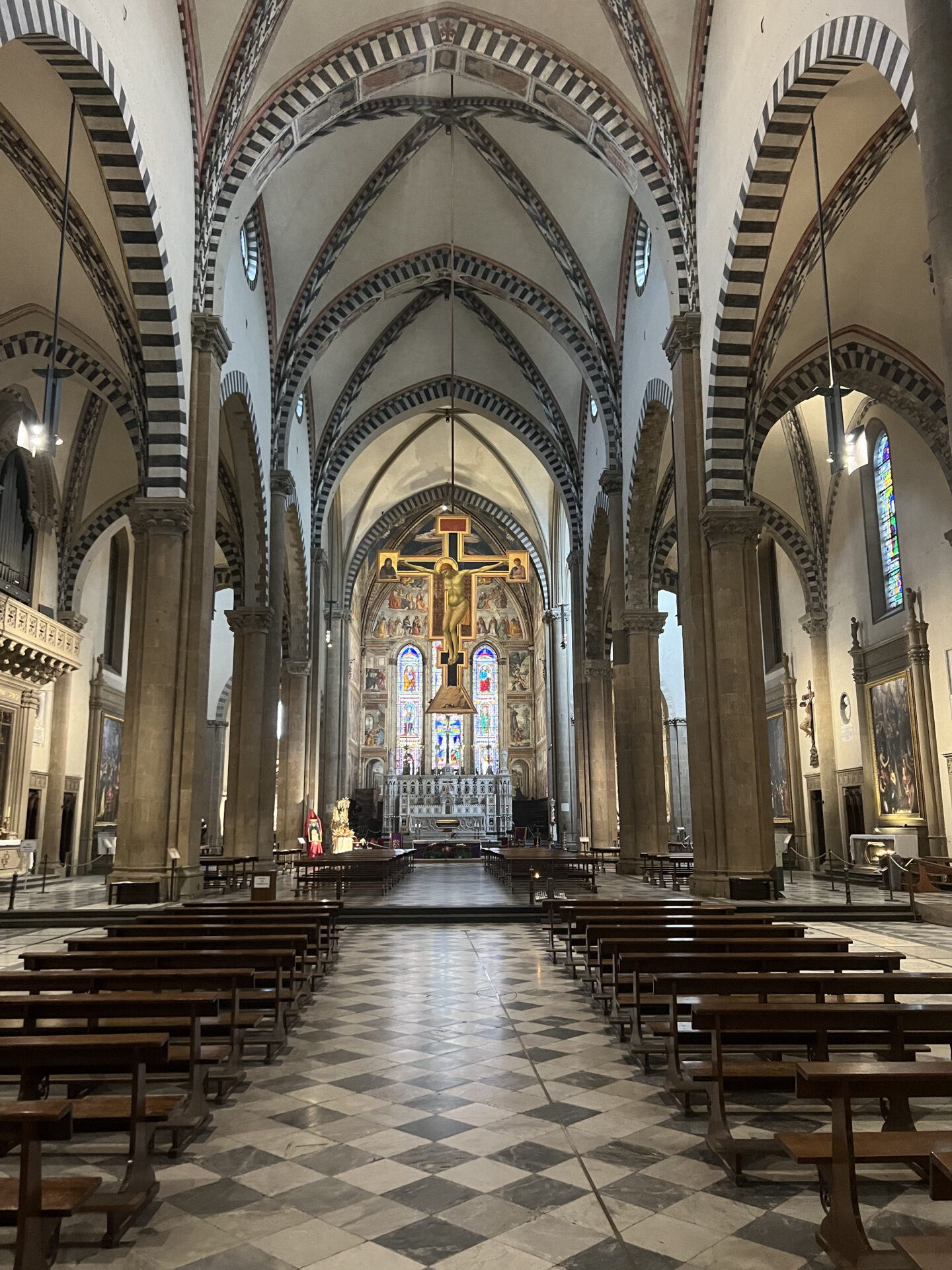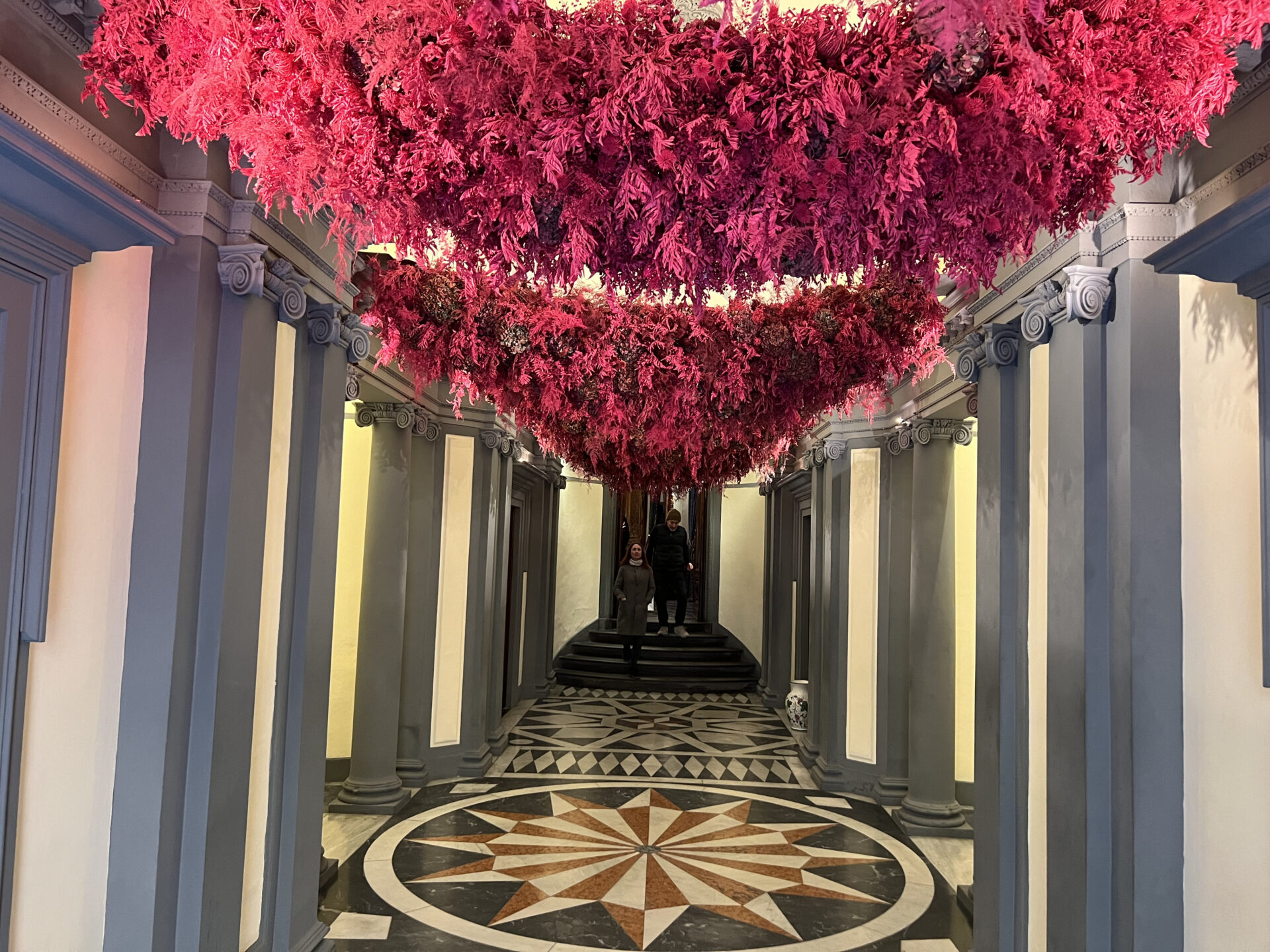As a hub of Dominican religiosity, the Basilica, steeped in history, engages in a captivating dialogue with the adjacent contemporary Santa Maria Novella Station. The latter, a recent creation by the Tuscan Group under the guidance of Giovanni Michelucci, complements the Basilica, creating a unique fusion of 20th-century design and 14th-century grandeur. This interaction represents the pinnacle of a journey where Florentine architectural and artistic expression seamlessly intertwines the old with the new.
The robust stone and glass chosen by Michelucci, reminiscent of the materials employed centuries earlier for the Basilica, serve as a bridge between the ancient and the modern. Notably, the facade of the Basilica stands adorned with Carrara white and Prato green marble, featuring distinctive volutes designed by Leon Battista Alberti at the behest of Giovanni Rucellai. This facade commands attention in the expansive square, where four turtles support two obelisks, once a backdrop for the exhilarating horse-drawn carriage races favored by Cosimo I de’ Medici.
A short stroll from the Santa Maria Novella square, down Via della Scala, leads to the Officina Profumo-Farmaceutica di Santa Maria Novella. This historical establishment, once a haven where friars concocted medicinal remedies from their cultivated herbs, continues to enchant visitors with an array of herbal preparations, as well as luxurious body, hair, and home lotions. Stepping into the Pharmacy’s premises, adorned with antique furnishings and frescoes, immerses visitors in an unforgettable, intoxicating aroma.
To learn more…
The Basilica of Santa Maria Novella serves as a treasury of precious artworks: from Giotto’s crucifix and Masaccio’s Trinity to Ghirlandaio’s Tornabuoni Chapel, each masterpiece invites a journey through the ages. Giotto’s exploration of human anatomy and chiaroscuro in the early 1300s, Masaccio’s application of Filippo Brunelleschi’s perspective rules in the early 1400s, and Ghirlandaio’s mentorship of Michelangelo in the late 1400s—these pivotal moments come alive within the Basilica’s sacred walls.
Exiting the Basilica leads to the Monumental Cloisters. In the Green Cloister, the Chapter Hall of the Dominican friars, adorned by Andrea di Bonaiuto in the mid-1300s, unfolds the charisma of the friars. St. Thomas Aquinas, with an open book on his knees, dominates one side, while Dominican friars engage in debates against heretics on the other, symbolizing the steadfast commitment to study and combatting heresy. These principles, along with the preparation of medicinal lotions from herbal ingredients, remain pillars of Dominican doctrine, exemplified by the enduring Pharmacy of Santa Maria Novella within the convent.
Before immersing yourself in the pharmacy’s offerings, a visit to the museum rooms is highly recommended. These rooms, housing sacred vestments, liturgical furnishings, and frescoes detached from the cloister walls for conservation purposes, showcase the brilliance of Paolo Uccello. Uccello’s detached frescoes, with their bold biblical scenes, resonate with a daring spirit that feels almost contemporary despite their historical origins.


















